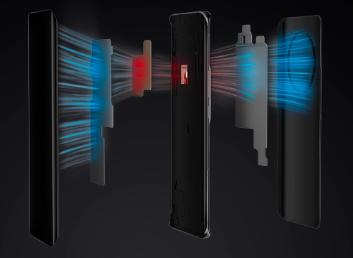How Wireless Charging Phones Can Transform Your Workday
In an era where time is a precious commodity, anything that can save us a few minutes here and there is worth considering. If you're looking to enhance your productivity and streamline your daily routine, you might not have to look any further than your smartphone. Specifically, the advent of wireless charging phones has introduced a game-changing convenience that can significantly impact how you work and stay connected. In this article, we'll explore how wireless charging phones can boost your productivity in various ways.

1. Seamless Charging Experience
One of the primary advantages of wireless charging is its effortless and convenient quality. You'll no longer need to struggle with charging cables, or attempting to position them correctly in poorly lit areas. With a wireless charging pad or stand on your desk, you can effortlessly place your phone down, and it starts charging. This eliminates the need to search for and connect a cable, saving you precious seconds throughout the day.
2. Always Ready to Go
Wireless charging encourages a habit of frequently placing your phone on the charger when it's not in use, such as during breaks or when you step away from your desk. This means your smartphone is often fully charged or close to it, ensuring it's always ready when you need it. No more running out of battery during important calls or meetings, which can disrupt your workflow and cause unnecessary stress.
3. Reduce Cable Clutter
A cluttered workspace can be distracting and hinder productivity. Traditional charging cables, especially when multiple devices are involved, can contribute to the chaos. Wireless charging eliminates the need for multiple charging cables, as one charging pad or stand can accommodate various devices. This reduction in cable clutter not only improves the aesthetics of your workspace but also creates a more organized and focused environment.

4. Multi-Tasking Made Easier
Wireless charging allows you to keep an eye on your notifications and important messages without constantly picking up your phone. You can position your smartphone within your field of view while it charges, making it easier to stay connected and responsive to work-related matters while focusing on other tasks. This multi-tasking capability can help you manage your workflow more efficiently.
5. Boosted Meeting Efficiency
In today's remote and hybrid work environments, online meetings and video conferences have become the norm. Having your smartphone on a wireless charger during virtual meetings ensures it's fully charged and ready to use when you need to reference documents, share screens, or participate actively. No more scrambling for a charger when your battery is running low mid-meeting.
6. Stay Connected During Commutes
For those who commute to work, wireless charging can be a game-changer. You can place your phone on the charger while driving, ensuring it's charged and ready for your arrival. This is particularly valuable if you rely on your smartphone for navigation, checking emails, or staying connected during your commute. It reduces the chances of arriving at your destination with a low battery.
7. Power Up Throughout the Day
Wireless charging pads and stands are not limited to your office desk. You can strategically place them in various locations, such as your kitchen, living room, or even your bedroom. This way, you can top up your smartphone's battery throughout the day, ensuring it's always ready for any task or emergency without interrupting your workflow.
In Conclusion
Overall, the convenience of a wireless charging phone extends beyond the absence of charging cables. It encompasses a holistic approach to enhancing productivity by streamlining your daily routines, minimizing distractions, and keeping you connected when you need it most. As wireless charging technology continues to evolve and become more integrated into our lives, its potential to boost productivity is likely to grow even further, making it an essential tool for the modern worker.
